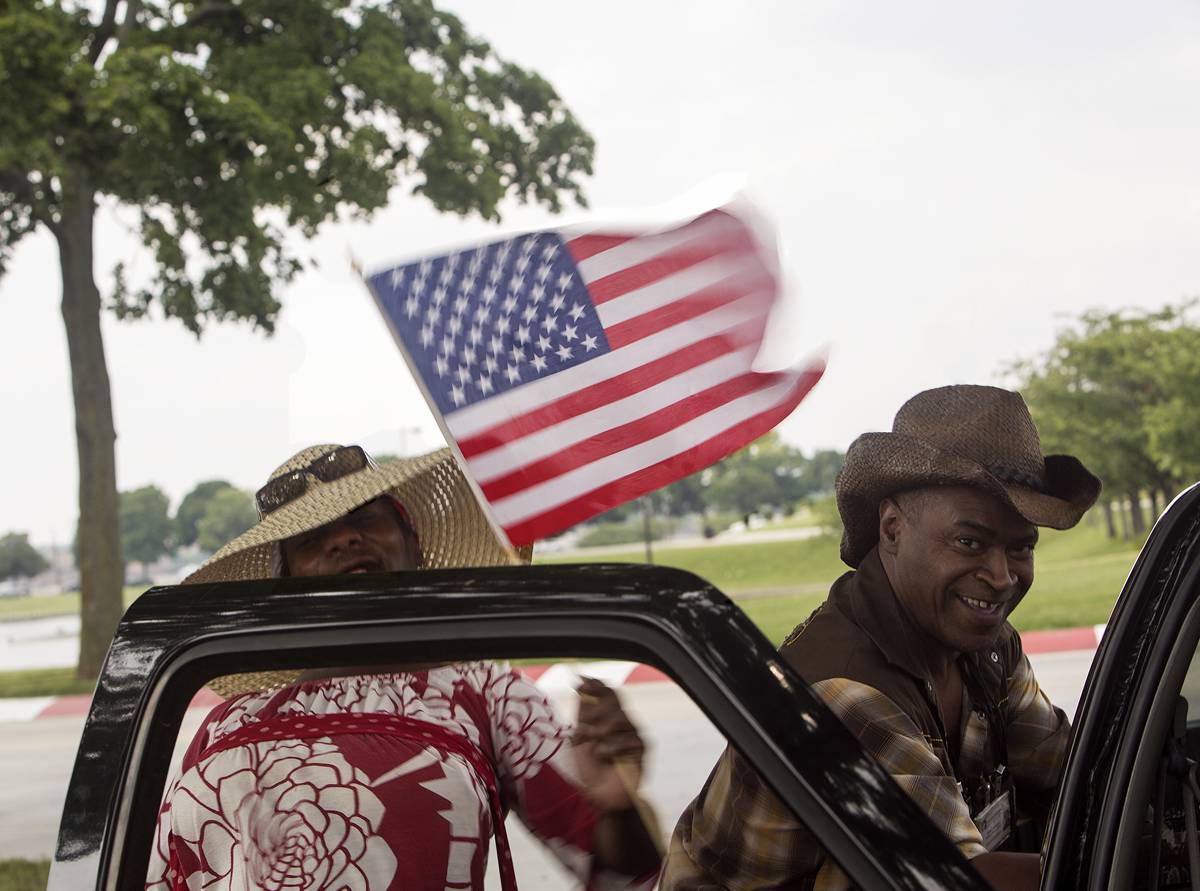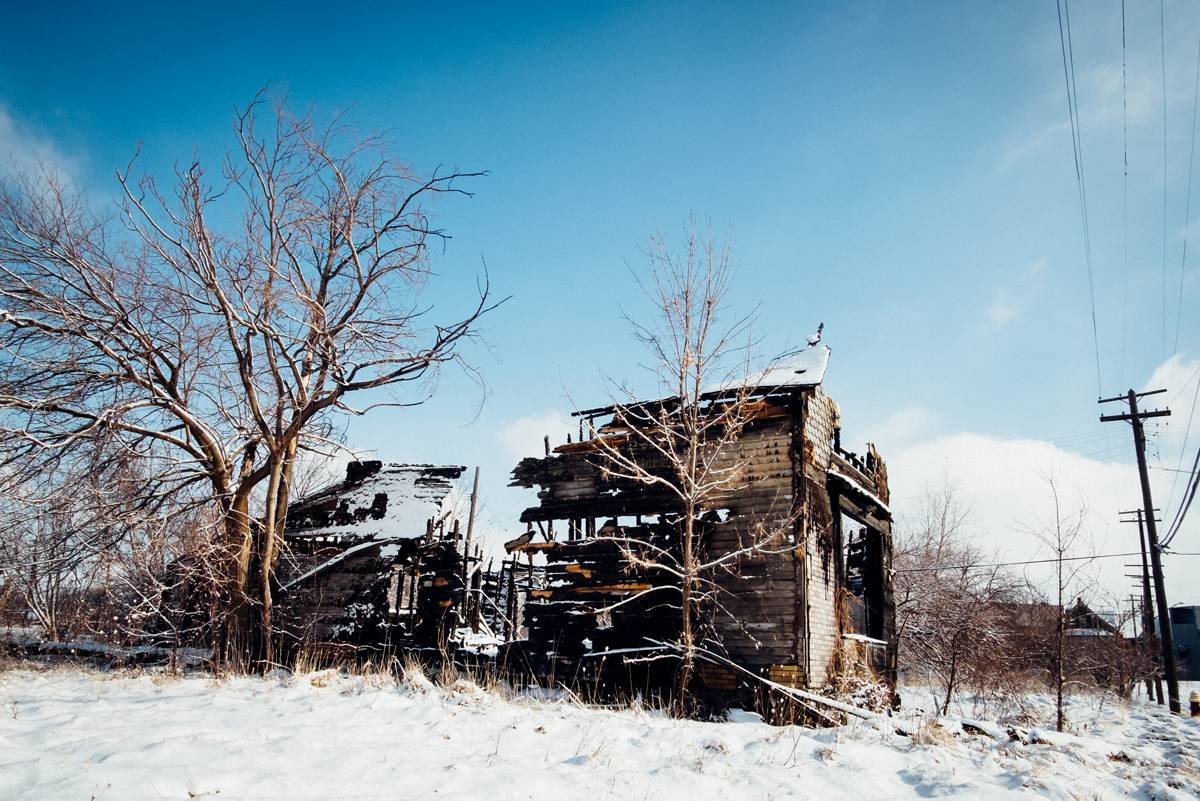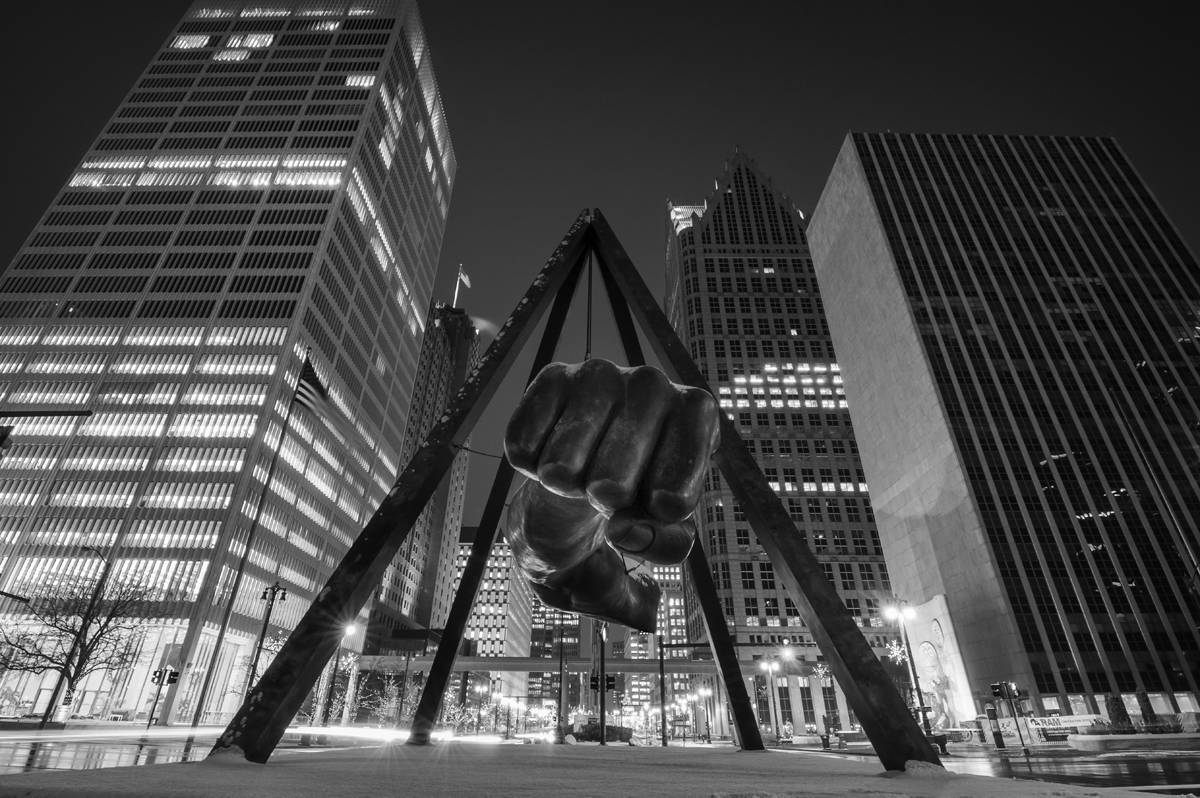On March 14, Director of Urban Studies and Associate Professor of English Tyrone Simpson boarded a train with 10 of his Vassar students. Technically speaking, it was spring break, but instead of making a beeline to sunny beach destinations, students in URBS 303 Advanced Debates in Urban Studies were heading west for nine days in chilly Detroit.
Why Detroit?
According to the catalogue, students were to consider—among other facets—“the ideals of ethnic integration and the realities of segregation; migratory processes and congregation by choice … and the formal and informal mechanisms that maintain—and those that undermine—urban inequality.”
Detroit was a perfect case study.
“You could argue convincingly that Detroit is the birthplace of ‘the American Dream.’ ”
Simpson had organized the trip in conjunction with the James and Grace Lee Boggs Center to Nurture Community Leadership, a hub for community activism and grassroots organizing located in struggling East Detroit. Students would also meet with city officials, including the deputy mayor, members of the City of Detroit Police Department, and officials in U.S. Customs and Border Protection. (Detroit borders Canada, after all.) They’d spend social time with students at the University of Michigan and parishioners at the Church of the Messiah, where a youth mission engages impoverished kids and offers them the chance to learn new skills. They would tour Belle Isle, a city-owned island park where White and Black citizens clashed in an infamous 1943 race riot. They’d discuss the use of vacant properties for agricultural production at Hantz Farms, a commercial enterprise, and Feedom Freedom, a nonprofit community garden and political organizing hub. They would visit arts-oriented institutions as varied as the Detroit Institute of Art and the Heidelberg Project, a grassroots outdoor art space in the heart of the East Side.

Of course, no trip to Detroit would be complete without pilgrimages to the city’s most recognizable symbols of urban decay: the abandoned Packard Motor Company plant—3.5 million square feet of crumbling bricks, blocks, and steel near the intersection of I-94 and East Grand Boulevard—and Hamtramck (aka Poletown), a city almost completely surrounded by Detroit that had seen one of the country’s most fierce eminent domain fights after residents objected to being moved out to make way for an enormous General Motors assembly plant in 1981. (Ultimately, the residents lost the case.)
Throughout the field trip, students explored the complicated history of Detroit, banishing simplistic notions about how the city got to where it was in 2013, when it was forced to declare bankruptcy. They also learned what Detroiters were doing to bounce back from the devastation.

“What I wanted students in the course to come to understand is that Detroit is a city of paradoxes and contradictions,” says Simpson. “You could argue convincingly that Detroit is the birthplace of ‘the American Dream,’ or at least the urban iteration of the dream—the single-family home with a front and backyard, a car in the driveway, and a good job with a decent wage. And that dream was the product of the auto industry, in particular Henry Ford’s mass production. But the dream had within it the seeds of its own demise and is responsible in large part for the predicament Detroiters find themselves in today.”
Because of its idolization of the automobile, for example, Motor City never developed a public transportation system—no subway, no city bus system. And, now, Detroiters living in farther-flung neighborhoods have no way to get to the jobs that are being created by the nascent economic resurgence of the city.

Henry Ford himself was a paradoxical figure, says Simpson, “an archetype of this same American Dream, the self-made man who survives and thrives and prevails through his own individual efforts and moral fiber.” Though some historians have questioned that moral character, writing that the industrialist was a bigot, Simpson says, “the Model T changed everything.”
Working conditions in the automobile factories—Ford’s and his competitors’—were onerous and the work grueling. It didn’t help that wages were so low. Workers could not even afford the cars they were producing. Turnover was a serious problem, but to make the assembly-line concept viable, Ford needed a massive and stable workforce. His solution was to offer $5 a day to factory workers—double the going rate. This was attractive to Southern blacks migrating north, as well as recent European immigrants. Ford helped to forge a middle class.
Detroit grew and grew. By 1950, its city limits had stretched to 159 square miles and its population had ballooned to almost 2 million people. These were the salad days, when Detroiters drove themselves to work in cars they were able to afford—perhaps the cars that they themselves helped to manufacture—because they had well-paying jobs.
But the paradigm shifted when factories started to relocate, says Simpson. “Detroit residents could no longer afford their homes after the jobs disappeared. Homes fell into disrepair, cars were repossessed, utility bills went unpaid, vandals set fire to vacant buildings, the tax base crumbled, services were shredded, people were destitute and demoralized,” he says.
A five-day riot (some prefer “rebellion”) that took place in 1967 didn’t help. “White flight” reached epic proportions.
Today, Detroit’s population is closer to 600,000—and with that decline has come a massive shrinkage of the tax rolls. The situation became so dire that, in 2013, the city was preparing to end the year with a $100 million shortfall. Michigan Governor Rick Snyder declared a state of fiscal emergency in Detroit and announced—controversially—that the state would appoint an emergency manager to oversee the city’s finances. Detroit filed for Chapter 9 bankruptcy months later.

But a new group of young entrepreneurs and developers were already taking advantage of the high vacancy rate in downtown office buildings. One of the largest developers is Dan Gilbert, the founder of Quicken Loans. According to Crain’s Detroit Business, his real estate company has purchased more than 80 buildings in the central business district. He moved the corporate headquarters to downtown Detroit from Cleveland, OH, in 2009, bringing 1,700 employees; now more than 3,100 call the city home.
Other big investors include billionaires Mike and Marian Ilitch, who own Little Caesars Pizza, as well as the Tigers (baseball) and the Red Wings (hockey) franchises. Ilitch Holdings is spending tens of millions of dollars to help address infrastructure improvements—think lighting, sidewalks, green spaces, and street maintenance—especially around the new Red Wings arena, scheduled for completion in 2017. The Detroit Metro Times reported that the company is privately investing about $200 million in mixed-use development near the arena, turning dozens of “blighted” blocks into five new neighborhoods. These developments are projected to generate almost $2 billion in total economic impact, 8,300 construction-related jobs, and 1,100 permanent jobs.
Even as many hold out great hope for development, some residents worry about the concentration of power and influence being in the hands of so few investors and wonder what it will mean for democratic processes that drive Detroit’s future. And many wonder whether attempts at revitalization will positively impact all the citizens of Detroit or just a privileged few.
After years of divestment in the city, whites are flooding back into the downtown and midtown districts. According to the Associated Press’s Business Insider, “Detroit's white population grew from just under 76,000 residents to more than 88,000” in the three years after the 2010 U.S. Census. “The cheap cost of living, opportunities for young entrepreneurs, and a push by city-based companies to persuade workers to live nearby have made a big difference,” it noted.
For young professionals, powerful incentives for relocating to the heart of Detroit are hard to resist.
Young professionals do not seem as drawn to the suburbs as their parents were, and powerful incentives for relocating to the heart of Detroit are hard to resist. A program called Live Midtown, offered through some employers, for example, allows new homeowners moving to the district to take out loans of up to $20,000 that they don’t have to repay if they stay in the property for a certain number of years, and new renters are eligible for thousands of dollars in allowances. Live Downtown offers similar incentives.
Meanwhile Detroit’s black population went from about 776,000 in 1990 to an estimated 554,000 in 2013, notes Business Insider. Blacks “appear to be weary of waiting for Detroit to turn things around and have been migrating to nearby suburbs in search of comfort, better schools, and lower crime,” it says.
As Professor Simpson concludes, the city has had a “complex and contradictory history.” No doubt, making it vibrant again will require a complex set of solutions.
Inspired by Simpson and his class, the staff of the Vassar Quarterly followed in many of their footsteps (and beyond) to bring readers a snapshot of the city today—devastated neighborhoods and vacant land, innovative entrepreneurs and a vibrant arts movement, urban farms and food deserts, a reenergized auto industry, and the hope and resilience of its people.
